Dental stem cell-derived extracellular vesicles transfer miR-330-5p to treat traumatic brain injury by regulating microglia polarization
- PMID: 36064768
- PMCID: PMC9445009
- DOI: 10.1038/s41368-022-00191-3
Dental stem cell-derived extracellular vesicles transfer miR-330-5p to treat traumatic brain injury by regulating microglia polarization
Abstract
Traumatic brain injury (TBI) contributes to the key causative elements of neurological deficits. However, no effective therapeutics have been developed yet. In our previous work, extracellular vesicles (EVs) secreted by stem cells from human exfoliated deciduous teeth (SHED) offered new insights as potential strategies for functional recovery of TBI. The current study aims to elucidate the mechanism of action, providing novel therapeutic targets for future clinical interventions. With the miRNA array performed and Real-time PCR validated, we revealed the crucial function of miR-330-5p transferred by SHED-derived EVs (SHED-EVs) in regulating microglia, the critical immune modulator in central nervous system. MiR-330-5p targeted Ehmt2 and mediated the transcription of CXCL14 to promote M2 microglia polarization and inhibit M1 polarization. Identified in our in vivo data, SHED-EVs and their effector miR-330-5p alleviated the secretion of inflammatory cytokines and resumed the motor functional recovery of TBI rats. In summary, by transferring miR-330-5p, SHED-EVs favored anti-inflammatory microglia polarization through Ehmt2 mediated CXCL14 transcription in treating traumatic brain injury.
© 2022. The Author(s).
Conflict of interest statement
The authors declare no competing interests.
Figures
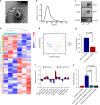
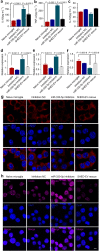

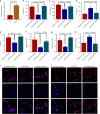
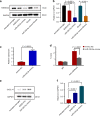


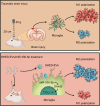
Similar articles
-
Mesenchymal Stem Cell-Derived Extracellular Vesicles Alleviate M1 Microglial Activation in Brain Injury of Mice With Subarachnoid Hemorrhage via microRNA-140-5p Delivery.Int J Neuropsychopharmacol. 2022 Apr 19;25(4):328-338. doi: 10.1093/ijnp/pyab096. Int J Neuropsychopharmacol. 2022. Retraction in: Int J Neuropsychopharmacol. 2025 Feb 4;28(2):pyaf006. doi: 10.1093/ijnp/pyaf006. PMID: 35015859 Free PMC article. Retracted.
-
Exosomes secreted by stem cells from human exfoliated deciduous teeth contribute to functional recovery after traumatic brain injury by shifting microglia M1/M2 polarization in rats.Stem Cell Res Ther. 2017 Sep 29;8(1):198. doi: 10.1186/s13287-017-0648-5. Stem Cell Res Ther. 2017. PMID: 28962585 Free PMC article.
-
Astrocyte-derived exosomes enriched with miR-873a-5p inhibit neuroinflammation via microglia phenotype modulation after traumatic brain injury.J Neuroinflammation. 2020 Mar 19;17(1):89. doi: 10.1186/s12974-020-01761-0. J Neuroinflammation. 2020. PMID: 32192523 Free PMC article.
-
Extracellular Vesicles miRNA Cargo for Microglia Polarization in Traumatic Brain Injury.Biomolecules. 2020 Jun 12;10(6):901. doi: 10.3390/biom10060901. Biomolecules. 2020. PMID: 32545705 Free PMC article. Review.
-
Extracellular vesicles as carriers for noncoding RNA-based regulation of macrophage/microglia polarization: an emerging candidate regulator for lung and traumatic brain injuries.Front Immunol. 2024 Mar 15;15:1343364. doi: 10.3389/fimmu.2024.1343364. eCollection 2024. Front Immunol. 2024. PMID: 38558799 Free PMC article. Review.
Cited by
-
The potential therapeutic roles of dental pulp stem cells in spinal cord injury.Front Mol Biosci. 2024 Apr 29;11:1363838. doi: 10.3389/fmolb.2024.1363838. eCollection 2024. Front Mol Biosci. 2024. PMID: 38741719 Free PMC article. Review.
-
Deciphering the Heterogeneity Landscape of Mesenchymal Stem/Stromal Cell-Derived Extracellular Vesicles for Precise Selection in Translational Medicine.Adv Healthc Mater. 2023 Jun;12(15):e2202453. doi: 10.1002/adhm.202202453. Epub 2023 Mar 26. Adv Healthc Mater. 2023. PMID: 36745771 Free PMC article.
-
Role of regulatory non-coding RNAs in traumatic brain injury.Neurochem Int. 2024 Jan;172:105643. doi: 10.1016/j.neuint.2023.105643. Epub 2023 Nov 24. Neurochem Int. 2024. PMID: 38007071 Free PMC article. Review.
-
Mechanistic insights into dental stem cells-derived exosomes in regenerative endodontics.Int Endod J. 2025 Sep;58(9):1384-1407. doi: 10.1111/iej.14269. Epub 2025 Jun 11. Int Endod J. 2025. PMID: 40497413 Free PMC article. Review.
-
Unraveling the Emerging Niche Role of Extracellular Vesicles (EVs) in Traumatic Brain Injury (TBI).CNS Neurol Disord Drug Targets. 2024;23(11):1357-1370. doi: 10.2174/0118715273288155240201065041. CNS Neurol Disord Drug Targets. 2024. PMID: 38351688 Review.
References
MeSH terms
Substances
LinkOut - more resources
Full Text Sources
Medical

